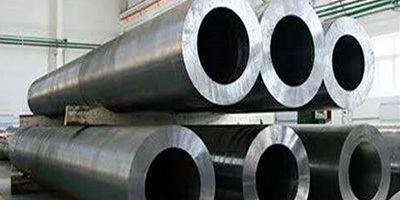
Flange Standards and Selection Methods
Release time:
20 Jan,2025
There are two types of flange standards used in petroleum and chemical industries: one is the pressure vessel flange standard, and the other is the pipe flange standard.
Both flat welding and butt welding flanges come in two types: with and without a lining ring. When the equipment is made of stainless steel, using a carbon steel flange with a stainless steel lining ring can save stainless steel.
When using flange standards to determine flange sizes, it is necessary to know the nominal diameter and nominal pressure of the flange. The nominal diameter of the pressure vessel flange is the same series of values as the nominal diameter of the pressure vessel. For example, a pressure vessel with a nominal diameter of DN 1000mm should be matched with a pressure vessel flange of DN 1000mm.
The determination of the nominal pressure of the flange is related to the maximum operating pressure, operating temperature, and flange material. This is because the series of flange sizes and the calculation of flange thickness are based on the mechanical properties of 16MnR at 200°C. Therefore, it is stipulated that the flange size determined based on this standard has a maximum allowable operating pressure at 200°C, which is considered to be the nominal pressure of the flange with that size. For example, a flange with a nominal pressure of PN 0.6MPa refers to a flange of a specific size made of 16MnR, which has a maximum allowable operating pressure of 0.6MPa at 200°C. If this PN 0.6MPa flange is used under conditions above 200°C, its maximum operating pressure will be lower than its nominal pressure of 0.6MPa. Conversely, if it is used under conditions below 200°C, its maximum working pressure will still be determined based on 200°C. If the flange material is changed to Q235-A, then the mechanical properties of Q235-A steel are worse than those of 16MnR, and this nominal pressure PN 0.6MPa flange will have a maximum allowable operating pressure lower than its nominal pressure even when operating at 200°C.
Conversely, if the flange material is changed from 16MnR to 15MnVR, then due to the superior mechanical properties of 15MnVR compared to 16MnR, this nominal pressure PN 0.6MPa flange will have a maximum allowable operating pressure higher than its nominal pressure when operating at 200°C. In summary, as long as the nominal diameter and nominal pressure of the flange are determined, the size of the flange is also determined. As for the maximum allowable operating pressure of this flange, it depends on the operating temperature and the material used for manufacturing.
Previous Page:
Next page:
Related News
Flange Standards and Selection Methods
20 Jan,2025
What is free forging of forged flanges?
20 Jan,2025



